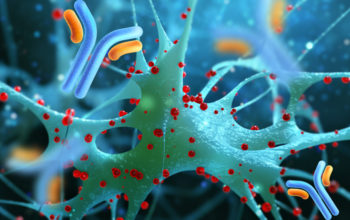
Date: 1st March 2021
Adeno-associated virus (AAV) has become the platform of choice for most in vivo gene therapy applications as safety and efficacy in human trials has been demonstrated. However, there are still concerns about potency and longevity of gene therapy treatments, as transgene expression reduces over time, and therapy re-administration is hampered by the immune response to the AAVs. Now, researchers have used tolerogenic ImmTOR nanoparticles encapsulating rapamycin admixed with AAV vectors to enhance hepatic transgene expression while simultaneously inhibiting adaptive immune responses.
The scientists from Selecta Biosciences, led by Takashi Kishimoto, have published their findings in Science Advances. Selecta Biosciences, based in Watertown, US, is a biotechnology company that is using their clinically validated ImmTOR™ platform to develop tolerogenic therapies that selectively mitigate unwanted immune responses.
Selecta Biosciences had previously shown that efficacy and safety of biologic drugs could be improved by the use of tolerogenic ImmTOR nanoparticles encapsulating rapamycin as they blocked the formation of neutralising anti-capsid antibodies.
Now, the team have shown that co-administration of ImmTOR admixed with AAV-based vectors significantly enhanced transgene expression after the first dose of AAV vector in naïve mice.
The team started by using AAV vectors to express a widely used reporter gene - embryonic alkaline phosphatase (AAV8-SEAP) in naïve mice, and found that after both the first and second dose, SEAP expression was significantly increased when co-administered with ImmTOR. The increase in transgene expression was seen as early as 7 days after the first dose, and reached up to 3 fold higher that mice treated with AAV8-SEAP alone. Transgene expression was then increased 2 fold again after the second dose (day 56).
Further experiments showed that admixing of ImmTOR and AAVs produced higher transduction and mRNA and protein expression, but did so without sacrificing the antibody suppression. This also led to increased AAV trafficking to hepatocytes in the liver.
ImmTOR permits AAV dose sparing
With this in mind, the team wanted to assess whether these dynamics allowed for a decrease in dosage. High dosing if often required to achieve and maintain therapeutic levels of transgene expression and can elicit high neutralising antibody titers, and an increased risk of inflammation which in turn can affect transgene expression and poses safety concerns.
The addition of ImmTOR enabled dose titration with two low doses, this achieved higher transgene expression at 40% of the total vector dose that in animals treated with a single high dose of AAVs alone (excluding the ImmTOR). Even a third dose was well tolerated and increased transgene expression, whilst mitigating anti-AAV antibody formation.
Conclusions and future applications
Selecta Biosciences here have shown that the admixing of ImmTOR with gene therapy vectors can overcome the challenges of immunogenicity and vector potency that such therapies experience in order to maintain therapeutic levels of transgene expression.
The addition of ImmTOR to AAVs mitigated neutralising capsid antibody, increased homing to the liver, and enhanced transgene expression from the initial dose. This augmentation facilitated lower dosing but also allowed repeat dosing, which cumulatively provided a four-fold increase in transgene expression.
Selecta Biosciences will look to progress the work to clinical trials, with the overarching aim of using ImmTOR to facilitate redosing of life-saving gene therapies, as well as to restore the body’s natural self-tolerance in autoimmune diseases. The company’s first program for the treatment of methylmalonic acidemia (MMA), a rare metabolic disorder, will enter clinical trials early this year.
There has been a recent boost in efforts to find novel methods of evading the immune system, as it is considered to be a crucial advancement for gene therapies. We have seen engineered ‘cloaked’ AAVs which evade the innate immune and inflammatory response via incorporation of antagonising DNA oligonucleotide, researchers have also turned to deep learning to design highly diverse capsid variants to evade recognition of neutralising antibodies. Other novels methods include the creating of ‘stealth bomber’ viruses which suppress tumour growth and target metastasis whilst evading the immune system, whilst nanogel loaded backpacks which stimulate suppression of the immune system have been used to treat autoimmune diseases or graft-versus-host diseases.
With more efficient ways to evade immunity, the potential for in vivo gene therapy to treat many diseases and millions of patients becomes far more viable and will advance these therapies to the clinic, creating safer and more efficient treatments. It is hoped that ImmTOR and other such technologies will greatly improve patient outcomes and quality of life, and change the way we address and treat patients with debilitating conditions.
For more information please see the press release from Selecta Biosciences
Ilyinskii, P. O., A. M. Michaud, C. J. Roy, G. L. Rizzo, S. L. Elkins, T. Capela, A. C. Chowdhury, S. S. Leung and T. K. Kishimoto (2021). “Enhancement of liver-directed transgene expression at initial and repeat doses of AAV vectors admixed with ImmTOR nanoparticles.” Science Advances 7(9): eabd0321.
https://doi.org/10.1126/sciadv.abd0321

